Blog
30 Apr 2016
Your dog is not the only athlete on your agility team!
By Sue Van Evra, BSc, MSc, BHScPT
Agility handlers as athletes are at risk for knee injuries, as this sport requires the high risk movements that are commonly associated with knee injuries; quick stops, turns and pivots. These types of stresses put the knee at risk of ligament, tendon and cartilage injuries. But don’t despair! There are preventative exercises that can be done to ensure that the knee joints are well protected!
Agility handlers spend hours training their dogs for competition, and need to invest some time preparing themselves for competition too! Many agility handlers are in very good physical condition from walking, running, cycling, swimming, etc…but unless they do specific exercises to protect the knees, they are still at higher risk of injury.
To put it simply, there are exercises that build strength, and there are other exercises that build ‘stability’. The stabilizing muscles of any joint protect and support the joint through various activities. The exercises build ‘proprioception’….Proprioception is the sense of position of a joint. During a competition, if a handler is running in one direction, and quickly changes direction, there are reflexes in the knee that send signals to the brain that the knee position has to change quickly. The brain quickly sends signals to the knee stabilizing muscles to turn them on and support the knee while the force through the knee is changing. The exercises help to sharpen this reflex.
Ok so what are these specific exercises? Here are some examples:
1. Single leg stance
- standing, lift one leg off of the ground
- keep hips level and keep knee in line with foot
- do not let knees touch
- try to hold 30 seconds without putting other foot down-as this exercise gets easier
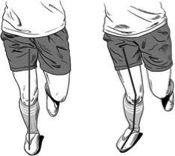
Correct Incorrect
-as this exercise gets easier, try with eyes closed or with arms/legs away from centre of gravity (airplane)
2. Squeeze squats
-stand against a wall
-hold small ball or pillow between thighs by gently squeezing ball
-keep squeezing the ball as you slowly bend knees into 1/3 of a squat
-hold the position 5 seconds, repeat 20X
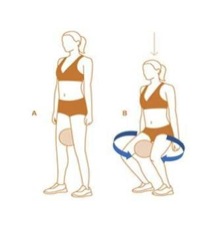
3. Clamshells
- lie on your side with knees bent
-keep feet together and rotate top knee off bottom knee
-do not allow spine to twist
-should feel ‘tired’ in buttock muscles (gluteus medius)
-do 3 sets of the # of reps it takes to feel fatigue
-if you do not feel tired in the ‘gluts’, reposition legs – slightly more or less knee bend – and repeat
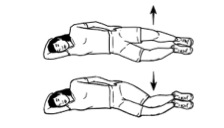
4. Side Lunges
-start standing with your feet shoulder width apart
-take a big step to one side (ie with left foot), and as soon as your left foot hits the ground, start lowering yourself toward the ground by bending the left knee…make sure that your knee is directly over your left foot…when your thigh is not quite parallel with the ground, push off left foot and return to standing
-repeat 10 X each direction
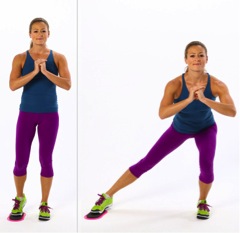
A good prevention program also includes agility exercises:
5. Grapevine
-this exercise is best to start out very slowly, then gradually increase the speed
-moving sideways, first the left foot crosses in front of the right, then behind, and repeat
- start with about a 30 ft stretch and go in both directions (always facing the same way) and repeat 5X
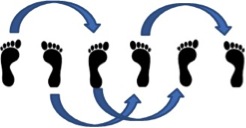
These are some example starter exercises. A good injury prevention program also includes specific stretches, and progresses to more difficult/advanced exercises.
Consult a Physiotherapist at Two Hands Physiotherapy for an assessment and custom fit program for you!!
